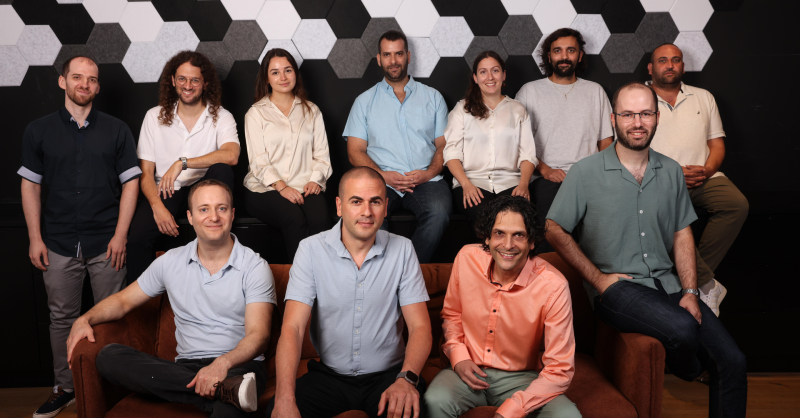In a major move in the world of quantum computing, Israeli deeptech startup QuamCore has raised $26 million in Series A funding, bringing its total capital to $35 million. The round was led by Sentinel Global, with participation from Arkin Capital, and existing backers including Viola Ventures, Earth & Beyond Ventures, Surround Ventures, Rhodium, and Quantum Leap. The Israel Innovation Authority also contributed a $4 million non-dilutive grant, underscoring national interest in the startup’s game-changing potential.
From theory to reality
With the latest funding, QuamCore will transition from design and simulation to fabrication of its first-generation processors. The startup plans to establish a dedicated quantum lab, expand its team, and scale up operational capabilities.
This move signals confidence not only in the technical feasibility of the company’s approach but also in its commercial potential. It’s a critical phase where simulation meets silicon, and bold architecture must prove itself in physical form.
The scalability bottleneck in quantum computing
Quantum computing has long promised breakthroughs in drug discovery, materials science, AI, and energy. But for that promise to materialise, quantum systems must manage millions of qubits, the quantum version of bits. Today’s leading systems, from companies like IBM and Google, can manage only about 5,000 qubits per cryostat (the ultracold refrigeration systems required to operate quantum processors).
This limitation stems from the overwhelming engineering complexity, particularly the vast number of control cables and thermal management requirements that grow exponentially with more qubits. Scaling such systems has proven both technically daunting and economically unviable.
QuamCore’s breakthrough: 1 million qubits, one cryostat
QuamCore has reimagined the foundational design of quantum computers. Its novel architecture, fully designed and simulated, supports up to 1 million qubits in a single cryostat, a feat previously thought to be years or even decades away.
This radical simplification alters the cost structure and feasibility of quantum machines. Instead of needing dozens or hundreds of interconnected cryostats, a single unit can now host enough qubits to perform meaningful, fault-tolerant computation. This level of integration marks a paradigm shift in how quantum systems are conceived and built.
Founders with deep domain expertise
QuamCore’s founding team brings together leading experts in quantum information science, superconducting hardware, and large-scale semiconductor systems.
Alon Cohen is a seasoned technology leader with over 25 years of experience in intelligence systems and communication chip development. An alumnus of Israel’s elite IDF Unit 8200, Cohen previously co-founded EyeC Radar at Mobileye, where he played a pivotal role in developing a 4D imaging radar system, a critical sensor for Mobileye’s autonomous driving platform. His track record of transforming advanced sensing technologies into commercial products gives QuamCore a strong edge in building scalable, application-ready quantum systems.
Prof. Shai Hacohen-Gourgy brings deep scientific credentials as a professor at Israel’s Technion Institute and a global authority in superconducting-based quantum computing. With more than 15 years of research in solid-state physics and experimental quantum information, his work has been featured in top-tier journals like Nature. His expertise anchors the technical strategy behind QuamCore’s superconducting architecture and integrated quantum logic.
Prof. Serge Rosenblum, based at the Weizmann Institute of Science, is another cornerstone of QuamCore’s scientific leadership. With over 15 years in quantum research, his contributions to quantum information science and quantum optics have been published in elite journals such as Science. His background strengthens the company’s focus on quantum coherence, measurement precision, and fault-tolerant architectures.
The engineering innovation
The heart of QuamCore’s innovation is its tightly integrated superconducting digital control logic embedded directly within the cryostat. This eliminates the need for thousands of external cables, which not only simplifies system design but also removes the primary thermal bottleneck that has stalled large-scale adoption.
Additionally, the system incorporates built-in error correction, a non-negotiable requirement for real-world quantum computing. Without error correction, quantum systems are prone to instability and data loss due to noise and environmental interference. By addressing this at the architectural level, QuamCore has taken a major step toward fault-tolerant quantum computing.
The bigger picture
By making quantum systems economically and technically scalable, QuamCore could unlock new applications across industries. In pharmaceuticals, faster simulations could reduce drug development timelines. In energy, quantum simulations might lead to breakthroughs in battery chemistry. In AI, more powerful algorithms could emerge from hybrid quantum-classical models.
More than just a technological milestone, QuamCore’s architecture-first approach redefines what is considered possible in the quantum realm. It’s not about catching up—it’s about setting the new standard.
“From day one, we focused on the minimum viable system to unlock real-world quantum advantage – and that number is 1 million qubits,” said Alon Cohen, CEO of QuamCore. “We chose to radically rethink the architecture of the most mature and performant platform: superconducting qubits. The result is a blueprint that can scale, stay compact, and remain aligned with where the industry is already headed.”
“QuamCore’s team has done what no one else has: built a practical, scalable roadmap to a million-qubit machine using superconducting technology — the most advanced and commercially promising platform in quantum today,” said Dror Sharon, Partner at Sentinel Global. “Their architectural innovation is a leap forward, not just in hardware, but in how we think about scaling quantum systems in the real world.”
“Quantum computing is now governed by scaling limits, not qubit fidelity. By embedding ultra‑low‑power superconducting control logic inside the cryostat, QuamCore removes the thermal bottleneck that throttles today’s systems and charts a credible path to a single‑cryostat, million‑qubit machine. That density will rewrite quantum economics and unlock markets we expect to be worth trillions of dollars. We’re proud to back this team,” said Nir Arkin, CEO of Arkin Capital.

